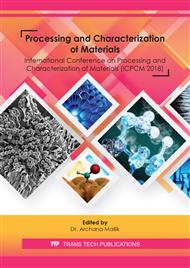p.3
p.12
p.21
p.29
p.34
p.40
p.49
p.55
Study of Calcium Treatment in Steel Ladles for the Modification of Alumina Inclusions to Avoid Nozzle Clogging during Casting
Abstract:
Presence of non-metallic inclusion deteriorates quality of steel and causes nozzle clogging during casting. Nozzle clogging eventually leads to a disruption of normal casting operations. This happens when solid alumina inclusions get accumulate in the nozzle of submerged entry nozzle (SEN). Therefore, it is required to understand the inclusion characteristics (shape, size and chemistry), which forms during the steelmaking process. Calcium is added in the steel ladle furnace (LF) in the form of CaSi wire to modify inclusions and to desulphurize steel. The range in which all the oxides become liquid and no solid sulphides begin to form is regarded as the "optimum window" or “liquid inclusion window” for calcium treatment. It is a target to obtain this calcium addition window, during calcium addition in the ladle furnace. This window mainly depends on the sulfur and total oxygen contents of the liquid steel bath. In the present study, inclusions characteristics such as volume fraction of inclusions, inclusion rating and EDS analysis of inclusions has been carried out using SEM-EDS. Thermodynamic study is carried out using thermodynamic software FACTSAGE and databases to find out formation of various calcium aluminates and the precipitation of CaS. Results show that liquid inclusion window mainly depends mainly on the sulphur level, total oxygen and aluminum content in the steel. These windows will help in calculation of calcium addition range for optimizing the addition of calcium in the ladle. These nomograms have been validated with actual plant condition to reduce the nozzle clogging during continuous casting.
Info:
Periodical:
Pages:
12-20
Citation:
Online since:
February 2020
Authors:
Price:
Сopyright:
© 2020 Trans Tech Publications Ltd. All Rights Reserved
Share:
Citation:


